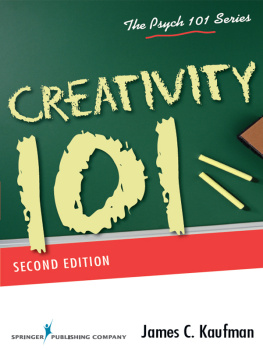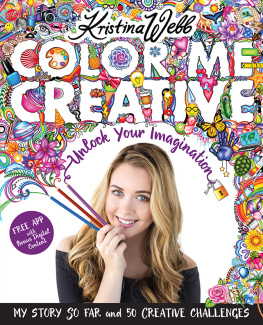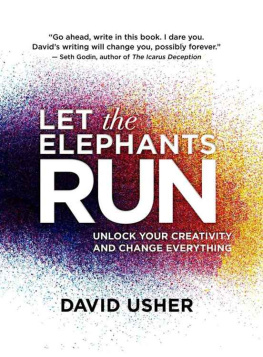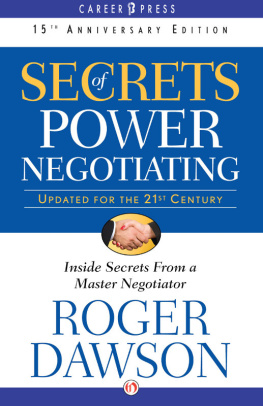Table of Contents
Copyright 1983, 1990, 2008, 2011 by Roger von Oech.
eBook Edition: 2011
All rights reserved. Except as permitted under the United States Copyright Act of 1976, no part of this publication may be reproduced, distributed, or transmitted in any form or by any means, or stored in a database or retrieval system, without the prior written permission of the publisher.
For more information, contact me at
LCCN: 2007932389
ISBN 978-0911121-13-7
Book design and layout by Roger von Oech
Text illustrations by George Willett
Front cover design by John Valk
Rear cover photo by Wendy von Oech
eBook edition by ePubEdition.com

Preface
The sun is new each day.
Heraclitus of Ephesus, Philosopher
Welcome to A Whack on the Side of the Head. Its both a fun exploration of the ten mental locks that prevent us from being more creative, and also a practical guide to what we can do to open these locks.
Im excited about this 25th Anniversary Edition for several reasons. First, it acknowledges that Whack has been around for a quarter century and in that time has succeeded in finding a wide and diverse audience. For that, Im truly grateful.
Second, its given me an opportunity to add some new stories and insights. I believe that Whack continues to be a fun and informative read, and I know youll pick up some useful creative thinking strategies in these pages. Its my hope that this new edition will find a new generation of creative thinkers and innovators in a variety of different disciplines!
]They describe a continually changing world with new things coming into existence, and others being relegated to the dust heap. Few among us would deny that creative thinking is a vital survival skill in such an ever-changing world. And fewer still would argue that its possible to be successful without the ability to look at things in fresh and different ways.
Whether youre an entrepreneur seeking a competitive edge, an artist or a marketing wiz angling for a different slant on a concept, a student looking for an antidote to some of what youve learned in school, a teacher exploring ways to invigorate a curriculum, or an engineer investigating soft thinking approaches, I think youll find some worthwhile creativity ideas here.

Many of the ideas presented here come from my experience as a creative thinking consultant. Over the past three decades, Ive had an opportunity to work with many creative people in a variety of industries and disciplines. This book contains stories, anecdotes, insights, and ideas that came out of these workshops, as well as my own thoughts about what you can do to be more creative.
How to read this book? Front to back works just fine. But I designed it so that you can also pop it open just about anywhere at random, and find something to provoke your thinking. (Give it a try right now, if you wish!)
Id like to thank the following people who have made difference in this book: Rick Wolff, Harvey-Jane Kowal, Brigid Pearson, Nansey Neiman, Amy Einhorn, Jack Grimes, Bob Metcalfe, Wiley Caldwell, Lance Shaw, Jordan Buck, Bob Wieder, Dan Zadra, Doug King, and Bill Shinker.
Many thanks to George Willett for his illustrations. Theyve made a difference.
Most of all, Id like to thank my family especially my wife Wendy for their ideas and encouragement.
Roger von Oech
Woodside, California
Mental Sex
Exercise: In my seminars, I like to start the participants off with the following exercise. Take a moment to do it.
- When was the last time you had a creative idea?
- This morning
- Yesterday
- Last week
- Last month
- Last year
- What was it?
- What motivates you to be creative?
The answers I get usually run something like this: I found a way to debug a software program; I discovered a way to sell a new application to a hard-to-satisfy client; I developed a new geometry curriculum; I motivated my daughter to do her homework; or, I decorated the living room around a different color.
Not long ago, I met a man who told me that he got his last creative idea a year ago. I thought to myself, This must have been some idea to have overshadowed everything else this year, and asked him what it was. I found a quicker way home from work, he replied.
I guess this person wasnt very motivated. He seemed to be saying, Everything is fine, and theres no reason to deviate from whats worked in the past. But he made me think: why be creative? Why challenge the rules? Why run the risk of failing and looking foolish?

I can think of two good reasons. The first is change. When things change and new information comes into existence, its no longer possible to solve current problems with yesterdays solutions. Over and over again, people are finding out that what worked two years ago wont work today. This gives them a choice. They can either bemoan the fact that things arent as easy as they used to be, or they can use their creative abilities to find new answers, new solutions, and new ideas.
A second reason for generating ideas is that its a lot of fun. Indeed, I like to think of creative thinking as the sex of our mental lives. Ideas, like organisms, have a life cycle. They are born, they develop, they reach maturity, and they die. So we need a way to generate new ideas. Creative thinking is that means, and like its biological counterpart, its also pleasurable.
What Is Creative Thinking?
Exercise: Lets suppose that youre a marketing hot shot. You get a call from the president of a large company and learn that somehow his inventory system has fouled up, and his company now has a $1,000,000 over-supply of ball bearings. Your task is to think of things to do with the ball bearings, using them individually or in combinations. Take a minute to list your ideas.
I once asked advertising legend Carl Ally what made the creative person tick. Ally responded, The creative person wants to be a know-it-all. He wants to know about all kinds of things: ancient history, nineteenth century mathematics, current manufacturing techniques, flower arranging, and hog futures. He never knows when these ideas might come together to form a new idea. It may happen six minutes later or six years down the road. But the creative person has faith that it will happen.
I agree. Knowledge is the stuff from which new ideas are made. Nonetheless, knowledge alone wont make a person creative. I think that weve all known people who knew lots of facts and nothing creative happened. Their knowledge just sat in their crania because they didnt think about what they knew in any new ways. Thus,

















